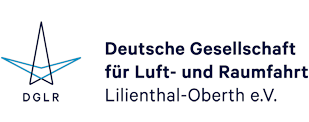DGLR-Publikationsdatenbank - Detailansicht
Autor(en):
P. Köhler, J. Tillner, S. Kabelac
Zusammenfassung:
One solution to reduce the climate impact of aviation is the use of hydrogen-based electric propulsion. The EUfunded project HYLENA (Hydrogen Electrical Engine Novel Architecture), which will investigate, develop and optimize an innovative, highly efficient and integrated aircraft propulsion system, is presented. HYLENA aims to evaluate and demonstrate the feasibility of an engine type that integrates Solid Oxide Fuel Cells (SOFC) into a turbomachine to utilize the heat generated by the fuel cells in addition to the electrical energy. This submission presents the HYLENA project and the way-of-working as well as a SOFC-gasturbine (SOFC-GT) concept in which the heat integration is done by additional heat exchangers. In particular, the position of the hot gas extraction is varied. Under otherwise identical conditions, the change of the extraction location affects the system efficiency as well as the air and hydrogen mass flow. It is shown that the hot gas extraction downstream of the turbines achieves the highest system efficiency. This is due to the higher temperature and therefore a higher enthalpy level upstream of the turbines. This effect can be seen in the needed number of cells as well as the SOFC power share. While the system efficiency with SOFC exhaust gas utilization is 50.9 %, there is an increase of 17.4 percentage points to 68.3 % (based on the mechanical shaft output power in each case). With almost constant operating conditions for the SOFC itself, the gas turbine can be better utilized due to the higher temperature. While the SOFC´s share of the total output power is 86.3 % after preheating with combustion exhaust, the share is reduced to 63.8 % with LPT exhaust gas utilization. Overall, it can be seen that the position of the heat exchanger has a significant influence on the system behavior. In addition to the increase in efficiency under the given boundary conditions, there is an influence on the system mass flows with reduced air and hydrogen mass flows.
Veranstaltung:
Deutscher Luft- und Raumfahrtkongress 2024, Hamburg
Verlag, Ort:
Deutsche Gesellschaft für Luft- und Raumfahrt - Lilienthal-Oberth e.V., Bonn, 2024
Medientyp:
Conference Paper
Sprache:
englisch
Format:
21,0 x 29,7 cm, 5 Seiten
URN:
urn:nbn:de:101:1-2412131011307.741879557986
DOI:
10.25967/630197
Stichworte zum Inhalt:
Solid Oxide Fuel Cell, SOFC-GT, Low-emission Propulsion, Hydrogen-based Engine
Verfügbarkeit:
Download
- Bitte beachten Sie die Nutzungsbedingungen dieses Dokuments: Copyright protected
Kommentar:
Zitierform:
Köhler, P.; Tillner, J.; Kabelac, S. (2024): Thermodynamic Assessment of Hydrogen-Fueled Solid Oxide Fuel Cell - Gas Turbine (SOFC-GT) Systems for Low-Emission Aircraft Propulsion. Deutsche Gesellschaft für Luft- und Raumfahrt - Lilienthal-Oberth e.V.. (Text). https://doi.org/10.25967/630197. urn:nbn:de:101:1-2412131011307.741879557986.
Veröffentlicht am:
13.12.2024
